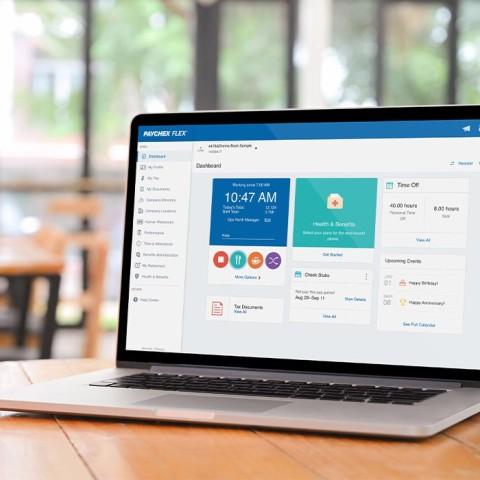- Nómina
- Artículo
- Lectura de 6 minutos
- Last Updated: 12/05/2024
Payroll Calendar for 2024/2025

Table of Contents
A payroll calendar is essential for companies to budget effectively and manage yearly compensation expenses. Understanding how many pay periods are in a year—whether you pay employees biweekly, semimonthly, weekly, or monthly—helps ensure smooth payroll operations and accurate scheduling.
In the U.S., payroll teams should watch for holidays when banks close since these can affect usual pay dates. Planning around these days allows you to keep payroll running smoothly and give your team and employees a dependable experience.
Download our 2025 payroll calendar to streamline payroll planning and help you ensure a smooth, predictable process for you and your employees.
What Is a Payroll Calendar?
When doing payroll, companies typically adhere to a specific schedule, such as biweekly pay dates. Scheduling payroll dates in a calendar year before the beginning of the year helps employers budget properly and follow wage payment laws and regulations. Detailed calendars can incorporate actual pay dates and additional information such as pay period end dates, timesheet due dates, and the workdays covered by each pay period.
A payroll calendar can help you ensure that all payroll-related administration is completed on time and that payroll delays are minimized. Drawing up a calendar in advance helps identify when payroll process adjustments may be needed. Employers may also need to communicate the changes in advance to employees to set expectations for changes in pay dates.
Adjustments may be needed when reviewing the upcoming calendar, for example where one or more paydays fall on holidays. Depending on which day the final pay date of the annual period occurs, a payroll run may need to stretch into the following calendar year. Other adjustments may also be required, such as the three pay period months that may occur with a biweekly pay period schedule.
How Many Pay Periods Are in a Year?
When preparing a payroll calendar, you will determine how frequently your company will issue paychecks. Bi-weekly pay periods are the most common (according to the Bureau of Labor Statistics), but depending on pay frequency laws, business needs, and employee preferences, you may pay employees monthly, semimonthly, weekly, or even more frequently. Before finalizing a payroll calendar, employers should also check for applicable state or local laws or regulations to determine pay frequency restrictions.
Weekly Payroll Calendar
Processing weekly payroll carries a higher administrative burden but can also increase employee satisfaction and may be required for certain industries in specific states. If payroll is processed every week, year-round, this generally results in 52 pay periods, depending on the date of the last pay period, which may shift into the following year.
Biweekly Payroll Calendar
Employers using a biweekly pay schedule will pay employees on the same day, such as on Friday, every other week. Biweekly processing requires the flexibility to handle a third payroll run in some months. Generally, there are 26 biweekly pay periods in a year, but depending on how the days of the week fall, there could be 27 pay periods. In some months, the regular pay date will occur three times rather than two. As a result, the payroll calendar should be reviewed before the start of the year to allow for proper planning.
Semimonthly Payroll Calendar
When following a semimonthly payroll calendar, pay dates occur close to the same date, twice each month, such as the 15th and the 30th or 31st. As with other payroll calendar types, these payroll calendars may need to be adjusted when the expected pay date falls on a weekend or a holiday when banks are closed.
Monthly Payroll Calendar
Employees would receive twelve pay distributions once per month on a pre-determined date for monthly pay periods. This could be the last business day of the month or another date that works best after considering factors such as the payroll department's workload, employee preferences, company cash flow, and state pay frequency requirements. A payroll calendar can be used to identify the payroll date for each month, working around holidays and weekends.
Which Pay Period Type Is Right for Your Business?
The best pay period for your business depends on several factors, including applicable legal requirements, your company's specific needs, industry norms, and the type of employees you have. If you have a lot of nonexempt employees and overtime is a concern, a weekly or every-other-week pay period can make payroll tracking and overtime management much easier. On the other hand, if most of your employees are exempt, a semimonthly or monthly pay period might make the most sense. This is especially true if you want to reduce payroll costs and associated administrative tasks.
Your employees are also a key factor to consider. Hourly employees may prefer a weekly or every other week pay period because it gives them a consistent, frequent paycheck. While more frequent pay periods mean more payroll runs, a payroll calendar can help you stay on track and prepare for each pay date and payroll processing period. Salaried employees may prefer a semimonthly or monthly pay period.
A payroll calendar is helpful no matter which pay period you choose. It can help you:
- Track pay dates, frequencies, and deadlines
- Reduce the chance of errors
- Plan for cash flow
By choosing the right pay period and using a payroll calendar, you can meet your business needs while accommodating your employees' needs.
Payroll Calendar FAQs
-
What Is the 27th Payroll Anomaly?
What Is the 27th Payroll Anomaly?
The 27th payroll anomaly occurs when a biweekly payroll calendar includes 27 pay periods instead of the usual 26. For salaried employees, this can mean either an additional paycheck or smaller individual paychecks if the annual salary is spread over 27 pay periods instead of 26. Employers typically plan for these years to manage budget impacts and communicate adjustments to employees.
-
How Often Do 27 Pay Periods Occur?
How Often Do 27 Pay Periods Occur?
A year with 27 pay periods typically occurs every 11 years, though this can vary slightly based on how leap years and calendar dates align. This extra period happens because the days in a year (including the additional day from leap years) accumulate over time, eventually leading to an extra pay period. Employers should plan for this rare occurrence to address potential budgetary impacts.
-
Is It Possible To Have 25 Pay Periods in a Year?
Is It Possible To Have 25 Pay Periods in a Year?
Yes, it's possible for companies using a biweekly payroll schedule to have 25 pay periods in a year. This happens when a company sets specific payday requirements, and holidays or weekends lead to adjusting the payroll schedule to avoid particular dates. When adjustments are made to align with business days, a payroll cycle may skip one pay period, resulting in only 25 paydays that year.
Scheduled Payroll With Paychex Can Make Business Simpler
Have you outgrown your payroll provider? Switching to Paychex is simple. Our all-in-one solution makes growing with Paychex a breeze. Whether you’re at 5 or 500 employees, we’ve got your payroll services covered.


Tags







